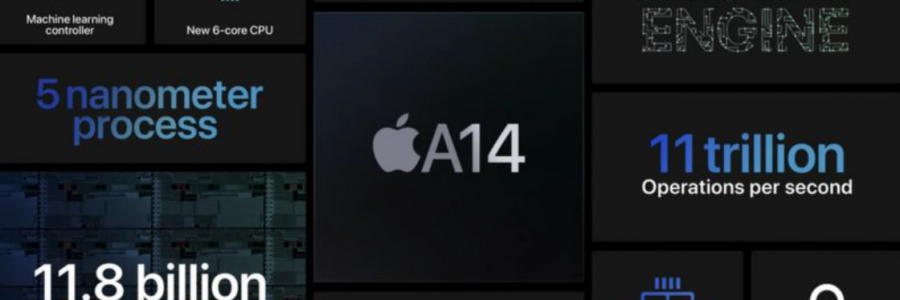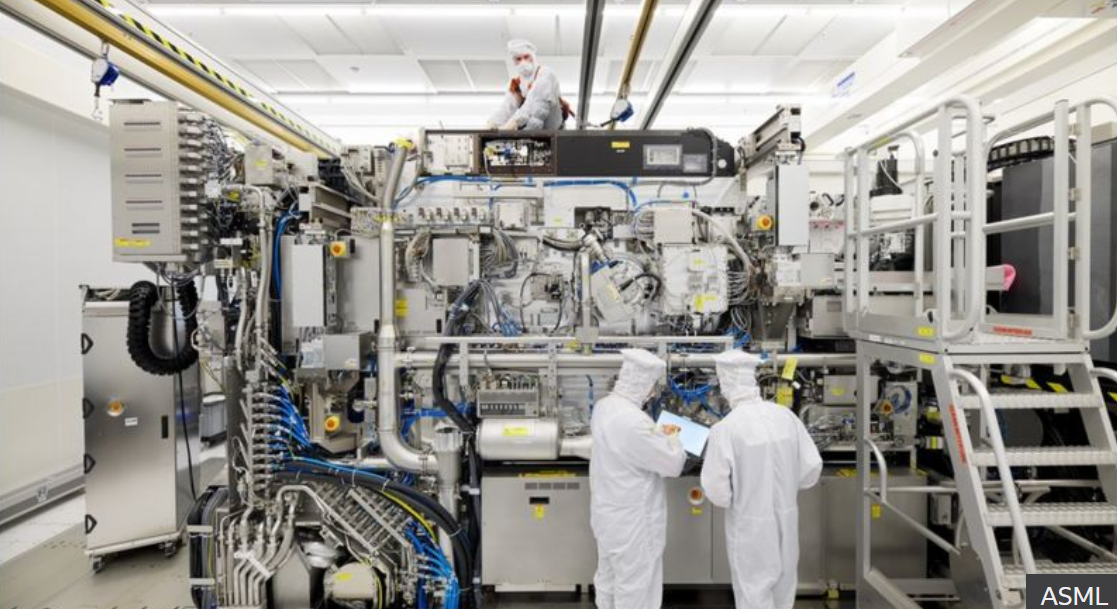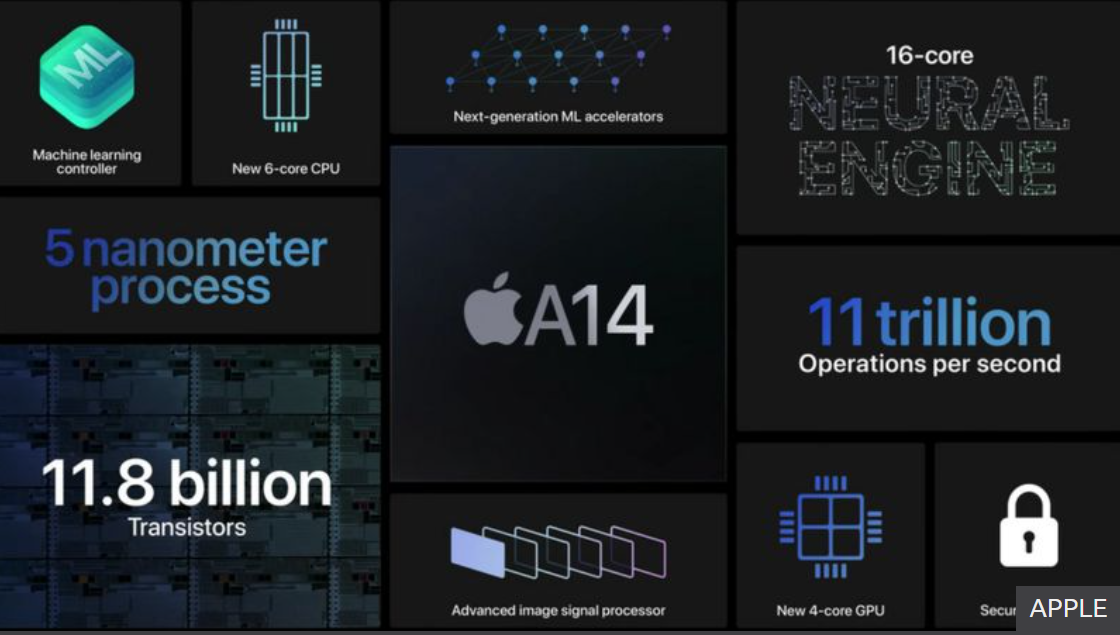
Apple’s A14 Bionic 64-bit chipset with 11.8 billion transistors


Apple’s A14 Bionic 64-bit chipset with 11.8 billion transistors is an ARM-based system which performs 30 per cent faster than the A12
Apple new iPhone 12 comprising of the five-nanometre process as the chip’s transistors have been shrunk down the tiny on-off switches are now only about 25 atoms wide allowing billion more to be packed in, with more brainpower with some help from a Dutch company ASML who pioneered a way to carve circuitry patterns into silicon via a process called extreme ultraviolet (EUV) lithography. ASML’s NX3400 machine has its insides hidden buy panels when in use and costs £92million ( $123m) each which is the highest compared to other semiconductor industry tools. The machine uses what it terms as feeble light generated via mindboggling process rather than ink.
“We take a molten droplet of tin and we fire a high-power industrial laser into it, which basically vaporises it and creates a plasma, which shines UV light and all this happens 50, 000 times a second, so 50, 000 droplets get hit which create enough light for us to capture with a series of mirrors – the flattest in the world, a blueprint of the chip’s design is encoded into the light by passing it through a mask and then shrinking it with lenses, which then hits a light-sensitive coating on a silicon wafer, causing the chip’s design to be printed ” according to Sander Hofman spokesman for ASML.
Taiwan Semiconductor Manufacturing Company sole supplier of the A14 to Apple for its latest iPhones, iPods, and Mac computers.
Samsung is making a new Qualcomm processor for Android phones, set to be formally unveiled in December.
The above two firms each own a stake in ASML alongside Intel, which is also expected to start using the tech in 2021. China’s Semiconductor Manufacturing International Corporation although put in an order, but the US government intervened to prevent ASML’s machine from being exported on the basis its output might end up in weaponry used by the Chinese military. SMIC currently lags several generations behind on 14nm chip tech.
A nanometer is one-billionth of a meter roughly the speed a human hair grows every second. Transistors used to be measured in terms of the width of a part known as their gate. Today the 5nm reference offer transistors with different performance. Apple’s new transistors are about 171 million laid out over every square millimeter. Huawei, also found itself unable to get its own Kirin 5nm chip designs manufactured as a result of a more recent intervention by the Trump administration.
AS 5nm is key to making our handsets smarter more tasks that used to be sent to remote computer servers for processing can be done locally, as we have already seen smartphones become capable of transcribing voice notes and recognising people in photos without the need for an internet connection. Artificial intelligence jobs become possible, helping smartphones make a better sense of the world around them.
Smaller transistors use less power than larger ones, meaning they can be run more quickly and efficiently and deliver a 15 per cent boost over the last 7nm generation while using the same power. The chips designers get space to create more special sections known as “accelerators”, helping the workloads like image processing, audio signal processing, video encoding or cryptography, to do the task as fast as it can do while extending the device’s battery life.
Apple A14 chip will do machine learning tasks up to 10 times faster than the A13.
